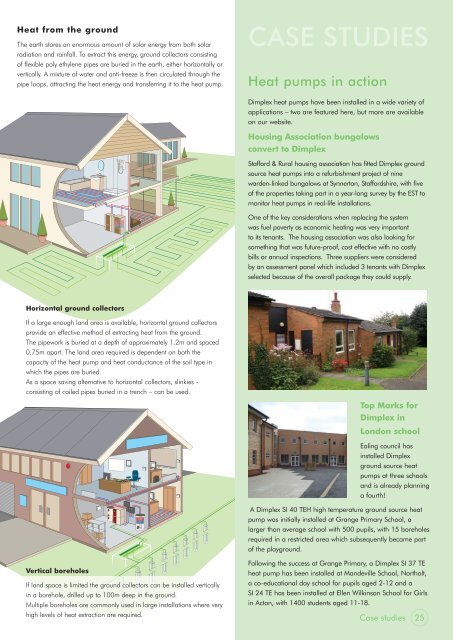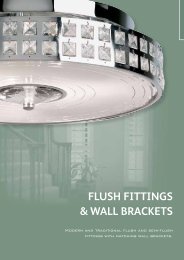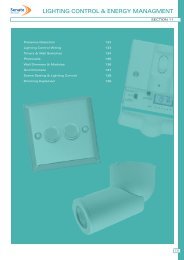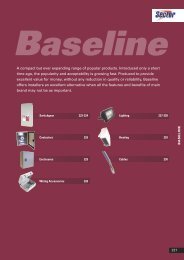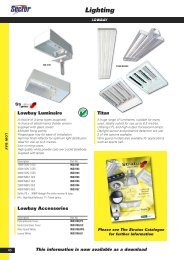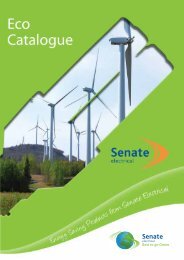Dimplex heat pumps - WF Senate
Dimplex heat pumps - WF Senate
Dimplex heat pumps - WF Senate
- No tags were found...
Create successful ePaper yourself
Turn your PDF publications into a flip-book with our unique Google optimized e-Paper software.
Heat from the groundThe earth stores an enormous amount of solar energy from both solarradiation and rainfall. To extract this energy, ground collectors consistingof flexible poly ethylene pipes are buried in the earth, either horizontally orvertically. A mixture of water and anti-freeze is then circulated through thepipe loops, attracting the <strong>heat</strong> energy and transferring it to the <strong>heat</strong> pump.CASE STUDIESHeat <strong>pumps</strong> in action<strong>Dimplex</strong> <strong>heat</strong> <strong>pumps</strong> have been installed in a wide variety ofapplications – two are featured here, but more are availableon our website.Housing Association bungalowsconvert to <strong>Dimplex</strong>Stafford & Rural housing association has fitted <strong>Dimplex</strong> groundsource <strong>heat</strong> <strong>pumps</strong> into a refurbishment project of ninewarden-linked bungalows at Synnerton, Staffordshire, with fiveof the properties taking part in a year-long survey by the EST tomonitor <strong>heat</strong> <strong>pumps</strong> in real-life installations.One of the key considerations when replacing the systemwas fuel poverty as economic <strong>heat</strong>ing was very importantto its tenants. The housing association was also looking forsomething that was future-proof, cost effective with no costlybills or annual inspections. Three suppliers were consideredby an assessment panel which included 3 tenants with <strong>Dimplex</strong>selected because of the overall package they could supply.Horizontal ground collectorsIf a large enough land area is available, horizontal ground collectorsprovide an effective method of extracting <strong>heat</strong> from the ground.The pipework is buried at a depth of approximately 1.2m and spaced0.75m apart. The land area required is dependent on both thecapacity of the <strong>heat</strong> pump and <strong>heat</strong> conductance of the soil type inwhich the pipes are buried.As a space saving alternative to horizontal collectors, slinkies -consisting of coiled pipes buried in a trench – can be used.Top Marks for<strong>Dimplex</strong> inLondon schoolEaling council hasinstalled <strong>Dimplex</strong>ground source <strong>heat</strong><strong>pumps</strong> at three schoolsand is already planninga fourth!A <strong>Dimplex</strong> SI 40 TEH high temperature ground source <strong>heat</strong>pump was initially installed at Grange Primary School, alarger than average school with 500 pupils, with 15 boreholesrequired in a restricted area which subsequently became partof the playground.Vertical boreholesIf land space is limited the ground collectors can be installed verticallyin a borehole, drilled up to 100m deep in the ground.Multiple boreholes are commonly used in large installations where veryhigh levels of <strong>heat</strong> extraction are required.Following the success at Grange Primary, a <strong>Dimplex</strong> SI 37 TE<strong>heat</strong> pump has been installed at Mandeville School, Northolt,a co-educational day school for pupils aged 2-12 and aSI 24 TE has been installed at Ellen Wilkinson School for Girlsin Acton, with 1400 students aged 11-18.Case studies25


